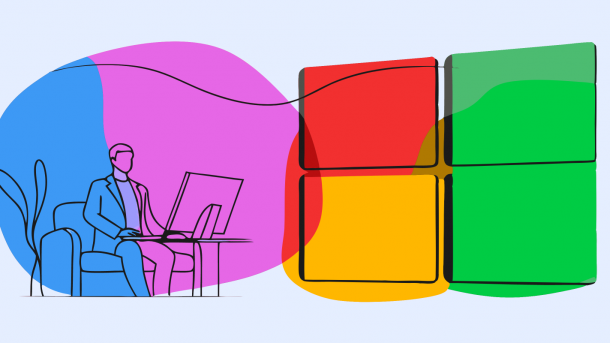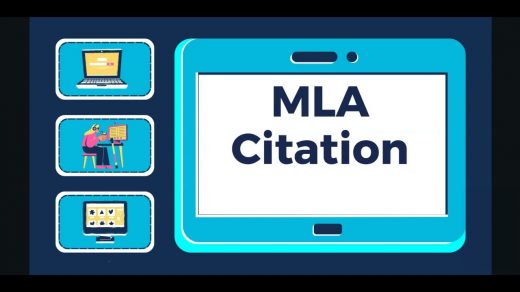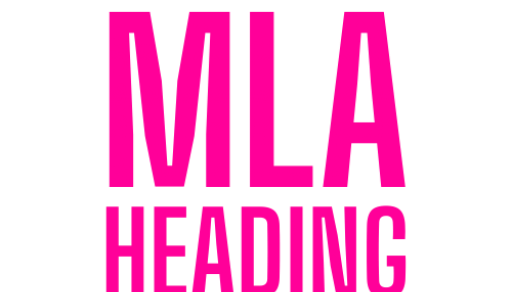Modern Language Association (MLA) style remains one of the most widely used citation systems in the humanities. It offers clarity, flexibility, and a deep respect for authorship—qualities that make it ideal for literature, philosophy, history, and cultural studies. Yet even with decades of use, MLA continues to be a source of anxiety for students. The problem is not ignorance but habit: small, recurring mistakes—misplaced italics, reversed element order, missing commas, inconsistent in-text citations—can turn an otherwise strong essay into a formatting puzzle.
This essay identifies the ten most common MLA mistakes encountered in student writing and explains how to fix them without resorting to mechanical memorization. Rather than presenting rigid do’s and don’ts, the discussion focuses on reasoning—why MLA rules look the way they do, what intellectual principles they protect, and how small corrections can improve both precision and professionalism. Examples are based on the MLA Handbook, 9th edition, with practical adaptations for the 2025 academic year.
By the end, readers should not only recognize the typical pitfalls but also feel confident navigating MLA as a tool for clarity, not a barrier to creativity.
Understanding the Mechanics: Formatting and Citation Pitfalls
One of the first places MLA mistakes appear is the Works Cited page, which functions as the heart of academic documentation. Each entry must balance two goals: providing complete information and maintaining consistent structure. The ten errors discussed here often cluster around formatting, punctuation, and in-text citation.
The first and perhaps most visible problem involves confusing italics with quotation marks. In MLA, titles of longer works—books, films, plays, and entire websites—are italicized, while titles of shorter works—articles, essays, poems, songs, and web pages—are enclosed in quotation marks. Many students reverse this rule, putting quotation marks around book titles or italics around journal articles. For instance, writing “The Great Gatsby” instead of The Great Gatsby misrepresents MLA’s hierarchy of works. The reasoning is conceptual: italics indicate a container or complete work, while quotation marks identify a part of a larger whole. Remembering this relationship—whole versus part—immediately corrects one of the most common stylistic errors.
A second mistake appears in the order of citation elements. MLA’s template follows a logical pattern—Author, Title, Container, Contributors, Version, Number, Publisher, Date, Location. Students frequently rearrange or omit these elements, sometimes placing the publication date immediately after the title or forgetting to include the container (such as a journal or website). The easiest fix is to memorize the logic, not the labels: the entry moves from specific to general (the work itself) and from general to specific (where the reader can find it). Once you internalize that rhythm, citation becomes intuitive rather than mechanical.
A third recurring error is inconsistent punctuation, particularly the misuse of commas and periods. MLA demands precision because punctuation marks act as structural cues. For example, the period always appears after the parenthetical citation, not before. Many students write: “Shakespeare’s plays explore politics and gender.” (Smith 42). The correct version places the period after the closing parenthesis: “Shakespeare’s plays explore politics and gender (Smith 42).” This small change maintains grammatical unity and reflects MLA’s principle that the parenthetical element is part of the sentence itself.
In-text citations also generate confusion when page numbers or authors are missing. MLA favors parenthetical brevity, but omitting the author’s name or repeating it unnecessarily disrupts flow. If the author’s name appears in the signal phrase—“According to Smith”—only the page number is required in parentheses (42). If no author is known, a shortened title replaces it. These adjustments keep the focus on clarity, helping readers connect evidence directly to sources without breaking narrative rhythm.
Another common oversight involves using the wrong version of the author’s name. Students sometimes reverse the order within in-text citations—using last name, first name—or include initials. MLA requires only the surname unless there are multiple authors with the same last name. Thus, (Toni Morrison 25) should simply read (Morrison 25). The Works Cited entry, of course, preserves the full name for alphabetical organization.
Error six concerns missing hanging indents. MLA formatting requires every line after the first in each Works Cited entry to be indented by half an inch. The purpose is aesthetic and functional: it helps readers distinguish entries quickly. Neglecting indentation creates a block of text that appears chaotic. Fixing this in modern word processors takes seconds, but its absence immediately signals carelessness.
The seventh pitfall relates to digital sources. Students either paste full URLs without formatting or omit them altogether. MLA recommends including stable URLs or DOIs without the “https://” prefix, unless required for functionality. For example: doi.org/10.1038/nature12345 or www.bbc.com/news/environment-65598712. Correct formatting shows digital literacy and ensures retrievability.
Another frequent oversight is mismanaging capitalization in titles. MLA applies “title case,” meaning that major words (nouns, verbs, adjectives, adverbs, and pronouns) are capitalized, while articles, conjunctions, and prepositions remain lowercase unless they begin or end the title. Writing The History Of The Modern Novel violates this rule; it should be The History of the Modern Novel. Consistency signals respect for editorial standards.
Students also stumble over secondary sources—citations of material quoted within another work. MLA discourages this practice when possible, advising writers to locate the original source. But when unavoidable, the correct format is “qtd. in,” as in: (qtd. in Johnson 58). Many omit the abbreviation or invert its placement, leading to confusion about authorship.
Finally, the tenth recurring issue involves alphabetization and consistency on the Works Cited page. Entries must be ordered by the author’s surname; titles beginning with numbers are alphabetized as if spelled out. Inconsistencies—mixing “MacDonald” before “McCarthy” or ignoring “The” at the beginning of a title—reveal uncertainty in basic organization. The rule of thumb: alphabetize by the first significant letter of the entry, ignoring initial articles (a, an, the).
To synthesize these problems, the following table summarizes the ten most frequent MLA mistakes and the straightforward corrections that solve them.
| No. | Common Error | Why It Happens | How to Fix It |
|---|---|---|---|
| 1 | Using quotation marks for book titles | Confusing “whole vs. part” distinction | Italicize long works, quote short ones |
| 2 | Misordering citation elements | Forgetting MLA’s template | Follow logical order: Author → Title → Container → Date → Location |
| 3 | Incorrect punctuation in in-text citation | Habit from other styles | Place period after parenthesis, not before |
| 4 | Missing or redundant author names | Over- or under-identification | Include surname only, avoid repetition |
| 5 | Absent hanging indents | Formatting oversight | Apply 0.5-inch indent to second line onward |
| 6 | Omitted or incorrect URLs | Unclear on digital norms | Include stable URL or DOI, remove “https://” |
| 7 | Wrong capitalization in titles | Misremembered style | Use title case, capitalize major words only |
| 8 | Misuse of secondary sources | Failure to find original | Use “qtd. in” for quoted-in citations |
| 9 | Alphabetization errors | Neglecting initial articles | Ignore “The,” “A,” “An”; alphabetize by key word |
| 10 | Mixing italics and quotation marks inconsistently | Aesthetic confusion | Follow MLA’s rule of container hierarchy |
Understanding why these errors occur helps prevent them. They often stem from cross-style interference (APA or Chicago habits), hurried writing, or outdated online citation generators. Recognizing MLA as a system of logic rather than ornament resolves these frustrations.
The Logic Behind MLA Style and the Psychology of Error
Students often perceive MLA as arbitrary—a maze of punctuation and formatting rules. In reality, every detail in MLA serves a communicative function. The distinction between italics and quotation marks, for example, is not decorative but semantic: italics mark independence, while quotation marks signal dependency. Similarly, MLA’s insistence on concise in-text citations reflects its humanistic heritage; the style privileges readability over numerical precision. Unlike scientific formats that rely on years and data codes, MLA assumes that readers engage primarily with authors and ideas.
Understanding the rationale behind these patterns prevents mechanical errors. The rule that the period follows the parenthetical citation, for instance, ensures syntactic coherence. The entire sentence—including its citation—forms a grammatical unit. Punctuation placed before the citation would fragment the sentence, implying that the citation is extraneous. By keeping punctuation inside the sentence structure, MLA preserves the illusion of seamless integration between text and reference.
Similarly, the rule of “author-page” citation emphasizes the literary assumption that meaning is located within a specific text and page, not an abstract date. This approach mirrors the humanities’ emphasis on close reading rather than temporal sequence. Recognizing such philosophical foundations turns rote formatting into a form of literacy: each punctuation mark encodes an epistemological stance.
Psychologically, many MLA mistakes emerge from the tension between speed and scrutiny. Students often complete essays late at night, copying citations from databases or citation generators without reviewing them. Yet automatic tools frequently misapply italics, omit DOIs, or capitalize titles incorrectly. The best antidote is slow, deliberate proofreading—reading citations aloud, line by line, to ensure logical rhythm. When the syntax sounds right, the punctuation usually is too.
The discipline of proofreading fosters intellectual integrity. A clean Works Cited page signals not only mechanical precision but also ethical transparency: the writer has nothing to hide. Professors often note that the most credible essays are those where even the smallest comma feels intentional. MLA style thus becomes a form of academic ethos—a quiet demonstration of respect for both reader and source.
Practical Strategies: Repairing and Preventing MLA Errors
While recognizing errors is useful, preventing them requires strategy. The first habit to cultivate is reading MLA examples directly from the Handbook or trusted university guides rather than relying on secondary summaries. The MLA Style Center and Purdue OWL remain authoritative references. Comparing your citation to an official example quickly reveals structural inconsistencies.
Another effective method is template imitation. Rather than memorizing abstract rules, select one accurate model for each type of source—a book, an article, a website—and reproduce its rhythm. When citing a book, for example, copy the punctuation pattern: “Author. Title. Publisher, Year.” Each element ends with a period, except the title, which ends with a period as well but appears in italics. Over time, the rhythm becomes intuitive, eliminating hesitation.
Students should also check the alignment between in-text citations and the Works Cited list. Every parenthetical reference must correspond to an entry; every entry should be cited at least once. One efficient proofreading strategy is to highlight each in-text citation and verify that its author surname appears exactly the same way in the Works Cited. Even small differences—like “Smith” versus “J. Smith”—create confusion.
Digital literacy is equally important. Since most research now occurs online, understanding how to handle URLs, DOIs, and missing publication data prevents half of all MLA errors. MLA allows writers to omit “http://” or “https://” for readability, but links must be functional. When the source lacks a date, include “Accessed day month year.” Many citation generators neglect this nuance, producing incomplete entries.
The visual design of the Works Cited page matters as much as the data it contains. Double spacing, consistent font, and proper indentation give the page an aesthetic rhythm. A Works Cited list is not just a technical appendix but an artifact of scholarly discipline. When formatted neatly, it conveys reliability even before a reader checks the content.
To internalize MLA structure, students can treat each entry as a micro-sentence. The author acts as the subject; the title functions as the object; publication details provide context. Thinking grammatically rather than mechanically turns citation into writing rather than bookkeeping. Once the pattern feels linguistic, mistakes decrease dramatically.
For long research projects, creating a personal MLA checklist helps maintain uniformity. Each time a new source is added, the writer can tick off categories: Author listed? Title capitalized correctly? Container italicized? URL present? Hanging indent applied? Over time this list becomes second nature.
When mistakes do occur, correction should follow logic rather than panic. If quotation marks and italics are confused, recall the conceptual rule: whole vs. part. If an element seems misplaced, consult the MLA template hierarchy. If punctuation looks uncertain, read the citation aloud; natural pauses often correspond to MLA’s punctuation rhythm. In this sense, fixing MLA errors is less about memorization than about developing stylistic intuition.
Conclusion: Clarity, Confidence, and a Student’s Checklist
At its core, MLA style embodies respect—respect for sources, for readers, and for language. The ten common mistakes discussed—ranging from misplaced italics to missing URLs—are not signs of incompetence but symptoms of misunderstanding the system’s logic. Once writers perceive MLA as a language of attribution rather than an obstacle course, these mistakes dissolve.
The effort to master MLA yields dividends beyond grades. It refines attention to detail, enhances rhetorical credibility, and cultivates ethical scholarship. A flawlessly formatted Works Cited page suggests that the writer values intellectual honesty as much as argumentation. In a digital era where information flows chaotically, MLA remains a framework of order—a quiet insistence that every idea, however fleeting, deserves accurate acknowledgment.
For students seeking a compact reference, the following Mini-Checklist condenses the essentials into a practical routine. Reviewing it before submitting any paper prevents most errors discussed above.
MLA Mini-Checklist for Students
-
Title formatting – Italicize full works (books, films, websites); use quotation marks for parts (articles, poems, web pages).
-
Element order – Follow MLA’s logical pattern: Author → Title → Container → Date → Location.
-
In-text citation – Place the period after the parenthetical reference. Include author’s surname and page number only.
-
Hanging indent – Apply a 0.5-inch indent to all lines after the first in each Works Cited entry.
-
Digital sources – Provide a stable URL or DOI, omitting “https://” when possible. Add “Accessed” date if no publication date exists.
-
Capitalization – Use title case: capitalize major words only.
-
Alphabetization – Order entries by the first significant letter; ignore initial articles.
-
Secondary sources – Use “qtd. in” for quoted material found in another source.
-
Consistency – Ensure each in-text citation matches exactly one Works Cited entry.
-
Final proofread – Read citations aloud for rhythm and punctuation; confirm visual alignment and spacing.




